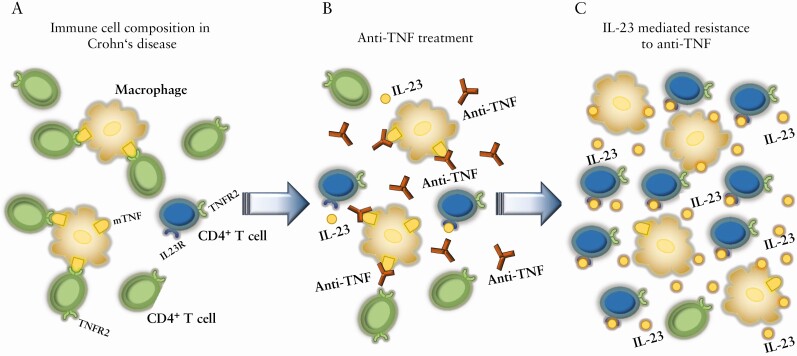Figure 1.
Molecular mechanism of IL-23-driven resistance to anti-TNF therapy in Crohn’s disease. [A] Immune cell composition in a Crohn’s disease patient prior to the initiation of anti-TNF therapy. Perpetuation of mucosal inflammation due to an indication of apoptosis resistance in TNF receptor 2 [TNFR2]-expressing CD4+ T cells by transmembrane TNF [mTNF]-expressing CD14+ macrophages. [B] After commencement of efficacious anti-TNF therapy, there is induction of CD4+ T-cell apoptosis by binding of the anti-TNF antibody to mTNF-expressing CD14+ macrophages, thereby inhibiting the mTNF/TNFR2 co-stimulation pathway between CD14+ macrophages and CD4+ T cells in the mucosa. [C] In anti-TNF non-responders, there is heightened production of IL-23 by CD14+ macrophages, which leads to the expansion of apoptosis-resistant IL-23R+/TNFR2+ CD4+ T cells, which drive resistance to ongoing anti-TNF therapy. The expansion of IL-23R+ lymphocytes creates a novel immune phenotype that drives mucosal inflammation, non-responsive to anti-TNF therapy but potentially responsive to IL-23 inhibition.

